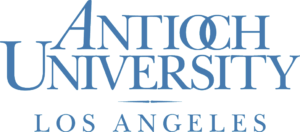Litdish: Sherri Cornett, Artist, Art Curator, Activist
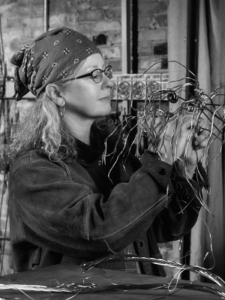 Sherri Cornett’s German immigrant and pioneer roots are set deep into the homesteads around the small south Texas town of Cuero, where both of her parents grew up, met, and married. By the time she settled in Billings, Montana, in 1993, she had lived in eleven cities and, in some of those, several homes. Out of this came an enjoyment of discovering new places and taking on adventures—hiking, mountain and rock climbing, traveling, skiing, sailing, scuba diving—and a propensity for saying “yes” to interesting, but hitherto unknown or unconsidered opportunities. In her art world, this led her to rewarding projects, such as co-directing “Woman + Body” in South Korea and directing “Half the Sky: Intersection in Social Practice Art” in China.
Sherri Cornett’s German immigrant and pioneer roots are set deep into the homesteads around the small south Texas town of Cuero, where both of her parents grew up, met, and married. By the time she settled in Billings, Montana, in 1993, she had lived in eleven cities and, in some of those, several homes. Out of this came an enjoyment of discovering new places and taking on adventures—hiking, mountain and rock climbing, traveling, skiing, sailing, scuba diving—and a propensity for saying “yes” to interesting, but hitherto unknown or unconsidered opportunities. In her art world, this led her to rewarding projects, such as co-directing “Woman + Body” in South Korea and directing “Half the Sky: Intersection in Social Practice Art” in China.
Influenced by degrees in political science and art, as well as her advocacy, activism, and campaign work around issues of women’s rights, human rights, environment, and education, her art and curatorial practices engage the psyche and soul of viewers She encourages them to ask questions of themselves and the world and build relationships around the search for answers. Underneath all of this is her passion for community building. Her work has exhibited in China, Korea, California, Chicago, Michigan, New York, Idaho, and Montana. www.sherricornett.com
10 Questions for Sherri Cornett:
1. In your opinion, how can art impact or influence social justice?
Books, articles, and essays have been written on this topic, but, from my experience as a curator, artist, and a past UN representative for the Women’s Caucus for Art, I have seen how art transcends language and cultural barriers. It provides an entry point to dialogue around social justice issues. The art attracts the eye, brings people closer, and can then encourage viewers to ask questions: Why this theme? Why this media? Why this depiction? Integral to most activist-themed art is an accompanying statement, which may answer some of these questions and can also elicit more questions. The goal is often to present viewers with a new angle for consideration, to encourage viewers to absorb another layer of understanding, to question their own knowledge and leave room for perhaps an initially uncomfortable recognition that previously held opinions might be wrong or incomplete or unhelpful.
The art is the starting point for the dialogue that occurs in front of the works, within the gallery, between viewers, within curator-facilitated community conversations, during field trips by student groups, through sharing of personal stories by the artists and those who interact with the works. All of these experiences ripple out from the venue as viewers discuss what they have experienced. I have seen new alliances form, actions created, opinions shared with policy makers, and policy makers themselves interact with the art.
2. What’s the most recent thing you’ve created or curated?
I am currently working with ForFreedoms.org and their project to organize activations in all fifty states between September first and the mid-term elections on November 6, 2018, with the goal to engender socially-engaged, art-based civil discourse around issues of freedom. This idea comes from the Four Freedoms speech by Franklin D. Roosevelt in 1941, during which he spoke about the freedom of speech, the freedom of worship, the freedom from want, and the freedom from fear.
The activations in Billings, Montana, where I live, will focus on Native American lives and include other underrepresented and under-recognized members of our community. A Native American Race Relations and Healing Series community conversation will be started by Northern Cheyenne Chief Judge John Robinson and Jeanine Pease, who among many important education related projects, founded Little Bighorn College on the Crow Reservation.
Events on the campus of Montana State University Billings will include a community conversation with international students, students from the Women and Gender Studies program and others—again, focused on freedom. Throughout these events, yard signs will be created that depict individuals’ perspectives on freedom. These will be installed on the MSU Billings campus. Other entities in Billings, including the Western Heritage Center, are tying in their programming to this project.
3. What or who inspires you most in your art?
My first degree was in political science, which informed my various activist and advocacy work. All along, my creative side was visualizing and manifesting 3D works and some photography and video. While in art school, I discovered the Women’s Caucus for Art, a non-profit focused on activist art since 1972. I crashed one of WCA’s meetings while visiting NYC years ago, learned about their international effort with the United Nations and immediately saw a way to connect these sides of myself by using art to create community and dialogue around social and environmental issues. Within a year, I was co-directing a feminist exhibition in South Korea, followed by one in northern China. The connections and conversations within these projects fed my soul and inspired me to do more such work.
4. How does your day job inform your art?
I am lucky to be able to say that my day job is curating and, too-infrequently, making art.
5. What advice would you give to emerging artists?
I recently read Elizabeth Gilbert’s book Big Magic, in which she advises creatives to think of their work as a vocation, but not necessarily a way to support themselves. Creating art may be an imperative for us—we must get these ideas out of our head and into the world—but there is no imperative for the world to compensate us for those ideas. We must have thick skin and create even though it comes with much rejection. The satisfaction of making something, creating something, facilitating something is in itself an end goal. If it comes out of a deep, genuine place in our soul, we will continue to be motivated. Outside acceptance is secondary.
I see the spirits of younger and/or newer artists, writers, musicians, and performers crushed by the unmet expectations that, if they create something, someone will want it. It is unfortunate that our country’s culture and policies, unlike those of some other countries, does not more broadly and financially support creative professions. But that shouldn’t stop us from creating. We just have to work harder, have more discipline, and create our own communities and collectives in which to encourage each other.
Develop fortitude—rejection is frequent—and professionalism. At least half of being a professional artist is the business of art—maintaining a website, social media presence, learning how to write about your work and your message, perhaps through a blog and self-promotion.
6. What is the most important thing(s) you want to get across in your art?
As I say on my website, I agree with those who believe that we must continue to investigate and discuss the grand narratives used to explain the world and that each of us should reformulate our questions and seek new answers as we learn and grow. My work is often a physical manifestation of these questions and answers. I develop exhibitions, projects, art and correlating events that engage the psyche of viewers and participants to the point where they, too, become moved to question, to consider, and to act.
7. What are your interests outside of the art world?
My passion for community building and being in community extends outside the art world. Beyond that, I seek out adventures and peace in the mountains and waters, here in Montana and during travel.
8. What is your process like when starting a new project?
When I am presented with a new idea—through reading, through a conversation, through an observation—my brain often immediately begins to play with how it fits into my current Weltanschauung, my worldview. And, if it is intriguing, how I can best share it with others, through physical art, through a conversation, through an essay, through an event or an exhibition. I capture any related thoughts or research in my journals and sketchbooks—some may have little connection, but I keep them together until enough have been collected that a pattern starts to appear. I often think of those artists whose ideas seem to come forth fully-formed as Athena from the head of Zeus. My process is far from that. It’s more of a messy collection of ideas and materials and then, in far-too-rare moments of quiet mindedness, a way to bring them all together develops. Even then, during the compiling and building, there is much experimentation, rethinking, taking apart and reforming, stepping back to get as systematic, as overarching a view as possible, listening to how my spirit responds and then going back in to edit.
9. What art exhibition should we all go see?
There are so many exhibitions coming out in response to the world tumult now. Just plug in the words, activist, exhibition, art, and social justice, and see what comes up in your area.
10. If you could ask yourself any question, what would it be and what would the answer be?
Hmmm. How could I make my life, my work, even more fulfilling?
I know that striving for balance in one’s life is a key component of the answer to that question. With a creative and curious mind, balance is a constant challenge. My mind is easily distracted by some observation that sends me down rabbit holes of thought and research, and thus, that part of my brain gets privileged at the cost of quiet and peace and simply being. If I am in the mountains or sitting beside a creek, this comes more easily. My seemingly never-ending quest is how to create that peace in my daily life.

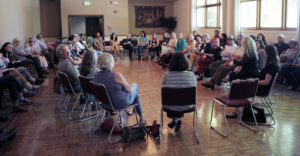
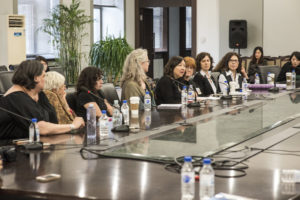
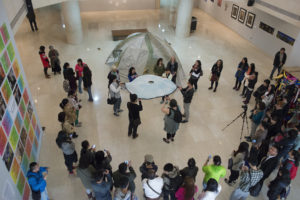
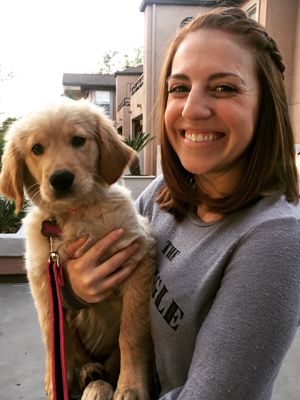 Kristina Ortiz is an elementary school teacher and MFA candidate at Antioch University Los Angeles where she is the associate managing editor and web team manager for the literary journal Lunch Ticket. She lives in Ventura County, California, with her fiancé, golden retriever Bella, and cat Lara.
Kristina Ortiz is an elementary school teacher and MFA candidate at Antioch University Los Angeles where she is the associate managing editor and web team manager for the literary journal Lunch Ticket. She lives in Ventura County, California, with her fiancé, golden retriever Bella, and cat Lara.


